Embark on a journey through Barcelona's captivating art and architecture. Explore the visionary works of Gaudí, Picasso, and more, set against the city's stunning landscapes.
GVI
Posted: July 5, 2024

Jana Jansen van Vuuren
Posted: April 11, 2022
Known for its deep history, sandy beaches and lush forests, Ghana is one of the 54 countries that make up the African continent.
Whatever your Ghanaian know-how, these 16 interesting facts about Ghana will help you get to know the country even better.
Ghana is pretty much at the centre of the world, being both close to the equator and on the Greenwich Meridian, which represents 0° longitude.
On a world map, you’ll find it on the west coast of Africa – the side bordering the Atlantic Ocean and closest to the Americas. Follow the western coast of Africa until it curves inwards and you’ll have located the Gulf of Guinea. Now, draw a line straight down from London to the Gulf of Guinea and you’ll have landed on Ghana.
And if anyone asks what time it is in Ghana? Well, that’s easy. Ghanaian time is exactly the same as Greenwich Mean Time, so it shares a time zone with London.

Ghana is one of a handful of countries vying for the title of “closest to the equator”. You aren’t likely to find many climates as tropical as this one. In fact, Ghana only really has two seasons: wet and dry.
In the dry season, temperatures can get pretty hot, reaching up to 30°C (86°F) on most days. The country is equal parts sandy desert, shrubby savannah and lush rainforest. While the area along the coast is dry, the heat is tempered by the cool breeze blowing off the Atlantic Ocean.
Just above the coast is the large man-made Lake Volta. Its green embankments stretch out along the eastern side of Ghana. In the middle of the country sits the Ashanti plateau – a series of rolling hills overgrown with tropical forests.
Go further north and the area becomes drier and turns into arid grasslands. Popular national parks in this area include Kakum National Park in the south – which boasts a canopy-level walkway through its jungle treetops – as well as Mole National Park, where herds of elephants roam the wide-open spaces.

Ghana’s port city, Accra, is the commercial hub of the country. It’s also Ghana’s most populated city and the seat of its government.
The country’s oldest university, the University of Ghana, is located in the suburb of Legon. If you choose to volunteer in Ghana you’ll want to check out the white sandy beaches (which are well-loved by surfers), street markets, and the National Museum of Ghana, where you learn about Ghana’s cultural history.
When travelling to Ghana, visitors fly into Kotoka International Airport in Accra. It’s easy to travel to some of Ghana’s other cities – like Kumasi in the forested Ashanti region and Tamale in the northern region.
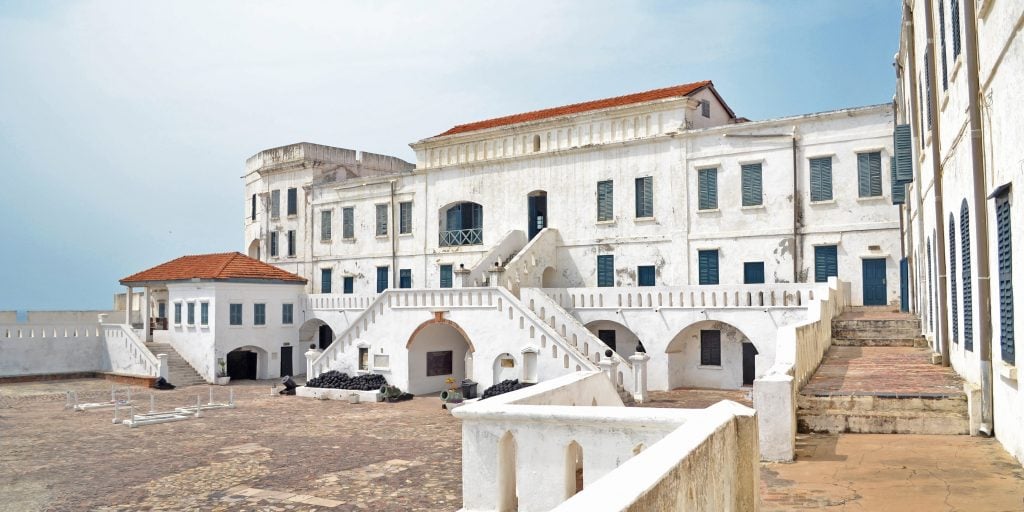
Ghana existed as an empire from the seventh to the thirteenth century. During this time, the Ghanaian Empire included what we now know as Mali, Mauritania and Senegal. The ruler of this empire was known as the Warrior King – or the Ghana – which is how the empire became known.
In the late 1400s, Portuguese settler colonialists arrived and began trading in gold, ivory and timber with various Akan states. This led to Ghana becoming a key link in a Portuguese trade route and a centuries-long struggle between colonial powers for control over the area. So much gold was found in the area that it became known as the Gold Coast.
The 1500s marks a painful time in Ghana’s history. Due to the growing demand in the Americas for human labour and given Ghana’s position in the trade route, castles and forts – which once housed gold, ivory and timber for trade – slowly began imprisoning enslaved people to be traded.
The colonial struggle for control over Ghana continued throughout the 1600s. Tragically, with the arrival of Dutch, Swedish, Danish and British colonialists – the trade in enslaved people became more established.
It is estimated that six million enslaved people were shipped from West Africa to other countries. Today you can learn more about this history and pay respect to the people who suffered through this dark period through a tour of one of the castles and trading posts along the coast of Ghana – which were for many people, the last time they saw their homeland.
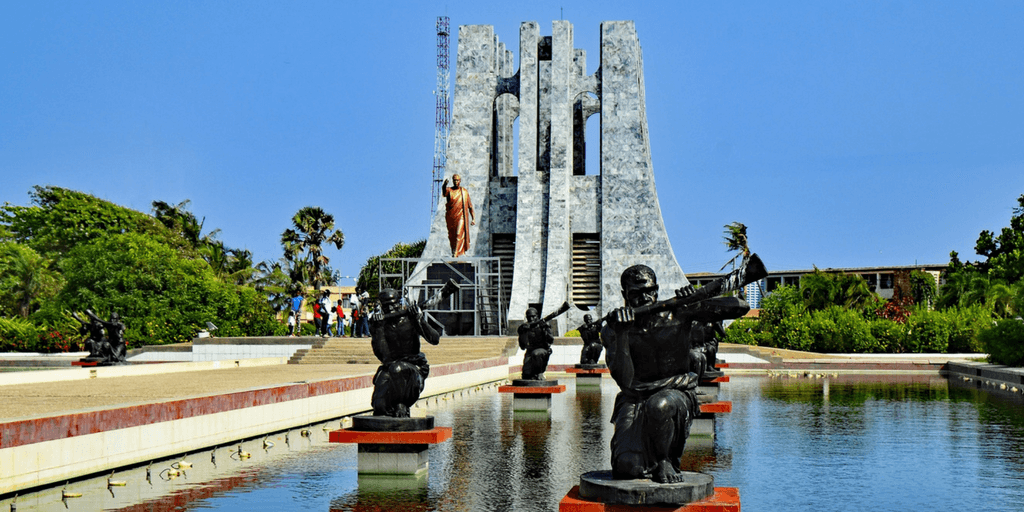
In 1957, Ghana became the first self-governing country on the African continent, under president Kwame Nkrumah. Their new flag incorporated the Pan-African colours (representing an ideology of political unity between all who live in Africa), red, yellow, green and black. Many other African countries followed suit.
Their coat of arms was created to proudly display the black star – a symbol of Ghana’s emancipation – and the national currency was changed from Pounds to Cedis.
Today, Ghana’s president is Nana Akufo-Addo, and the country continues to be a strong force in the economy and development of Africa.
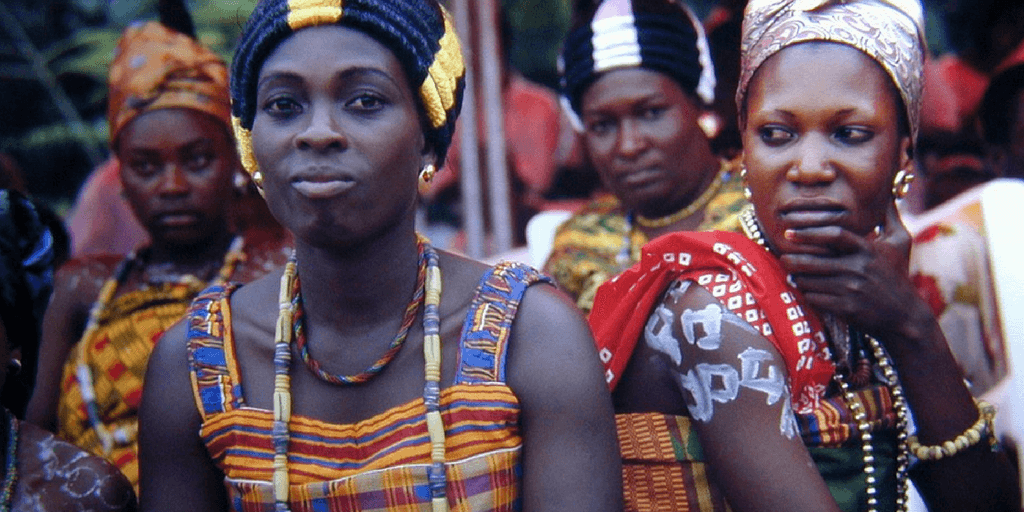
Ghana’s population lives in a cosmopolitan metropolis, and the government recognises a host of indigenous languages as national languages.
Two of the most widespread are the Twi language of the Ashanti people (which is spoken in the southern and central regions) and the Dagbani language of the Dagomba people – more commonly spoken by people in areas to the north.
Ghanaian languages were kept alive mainly through oral tradition. However, one group of Ghanaians – the Akan people – used a form of symbolic depiction known as Adinkra. Adinkra was used on everything from fabrics, jewellery and pottery, to walls, architectural elements and the weights used in trading gold. Personal and home accessories, as well as clothing incorporating these symbols, can be purchased from Ghana’s many artisans.
Modern Ghanaians communicate across linguistic barriers using English as a unifier. About half of the country speaks English, and it’s one of the nation’s official languages.
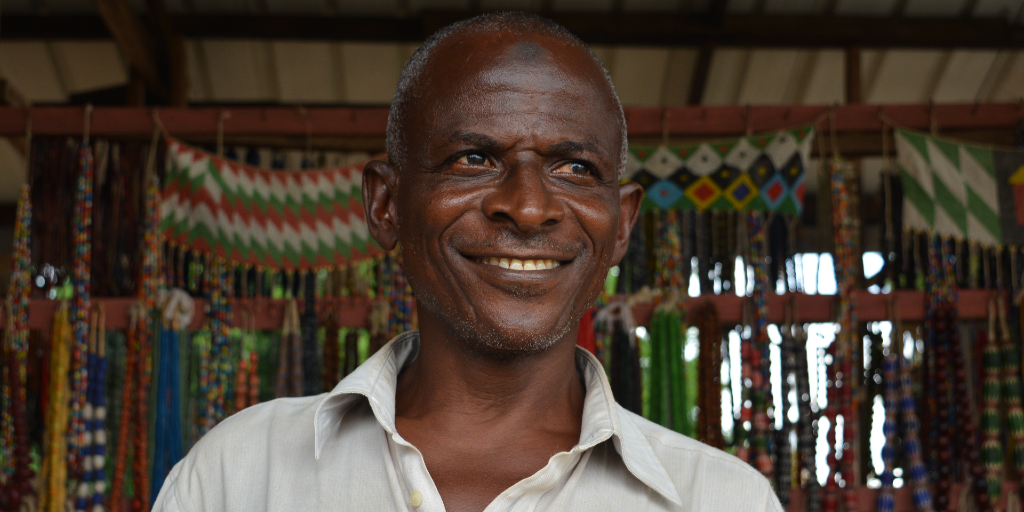
Original photo: “Bead merchant Garbe Mohammed at Koforidua beads market” by wrcomms is licensed under CC BY-SA 2.0
Today, most Ghanaians identify as Christian. However, the native religion of the influential Ashanti Empire was a form of polytheism. Many elements of this faith tradition are still active today and are a big part of Ghanaian culture, in combination with Christian traditions.
Ashanti/Asante cosmology centres around a supreme creator, widely recognised by the name Nyame. Nyame is said to make his home in the sky. Asase Yaa, the Earth goddess of fertility, is the second most powerful of the great spirits in this faith tradition, and is often considered a maternal figure.
Relatives who have passed over are considered to be part of the non-physical realm. A favourite folktale character of traditional Ghanaian storytellers is Anansi, a deceptive spider, represented in Neil Gaiman’s novel American Gods, which was recently made into a TV series.
One of the most predominant cultures in southern Ghana, that of the Akan people, practises a system of inheritance based on the matriarchal lineage. However, men still hold the main positions of power in this society.
For example, while both the king and his sister will inherit their royal status and wealth from their mother, it’s the king who will sit on the throne. But, it’s not the king’s son who will be given the throne, but the king’s sister’s son.
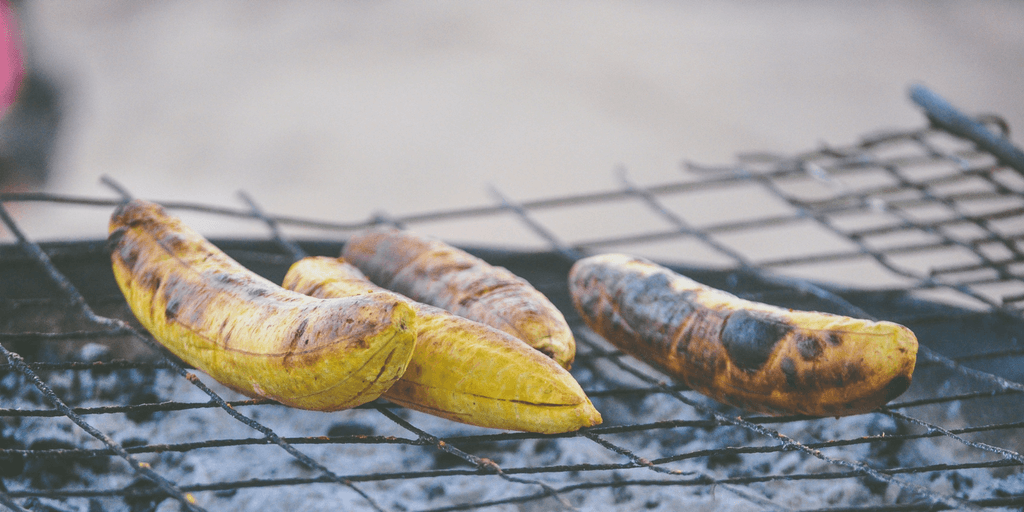
Ghanaian food is a mix of indigenous flavours and outside influences – including European and Indian. You’ll find tomato-based stews with complex flavours throughout Ghana. The stews usually contain a type of marine or freshwater fish and are eaten with a dough, which is used to scoop up the fish and soak up the fragrant sauce.
The dough – sometimes called fufu or akple – is made from any type of starch, including cassava, plantain, yam, maize, millet, sorghum, potatoes or cocoyams.
Another staple of Ghanaian cuisine is jollof rice – a one-pot rice dish that includes a variety of Ghanaian spices with tomatoes and chilli.
Peanuts are often used to flavour stews and garnish dishes. You’ll also find taro leaves and okra in many dishes.
Street food is also a big part of Ghanaian culture, so be sure to buy a few takeaway meals when you visit the markets.
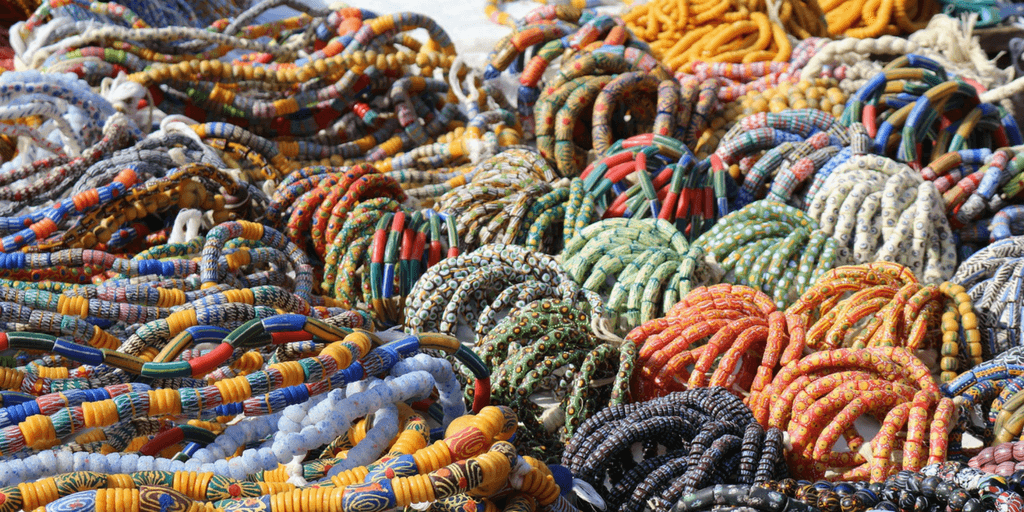
The Ashanti Empire was influential in shaping the culture of modern Ghana, and fashion is no exception. Kente cloth, the fabric worn by Ashanti royalty, is still a point of national pride.
Folklore tells of two boys exploring the jungle, being taught by Anansi, the spider spirit, how to weave the sacred fabric made from cotton and silk. This traditional cloth is actually made using a style of basket-weaving that creates distinctive blocks of brightly coloured stripes. Each colour has a unique meaning and was customarily woven to deliver specific powers to a certain person or for a specific occasion. Today, you can buy kente cloth in just about any market throughout Ghana.
Ashanti kings were also known for wearing the gold they grew rich trading in. This was fashioned into necklaces, rings and bracelets. Ghanaian people still place great value on gold jewellery today.
The Ghanaian braid, an incredibly versatile and protective braided hairstyle, originated here.
Modern Ghanaians wear a mix of Western and traditional clothing but remain advocates of brightly coloured, boldly patterned fabrics.
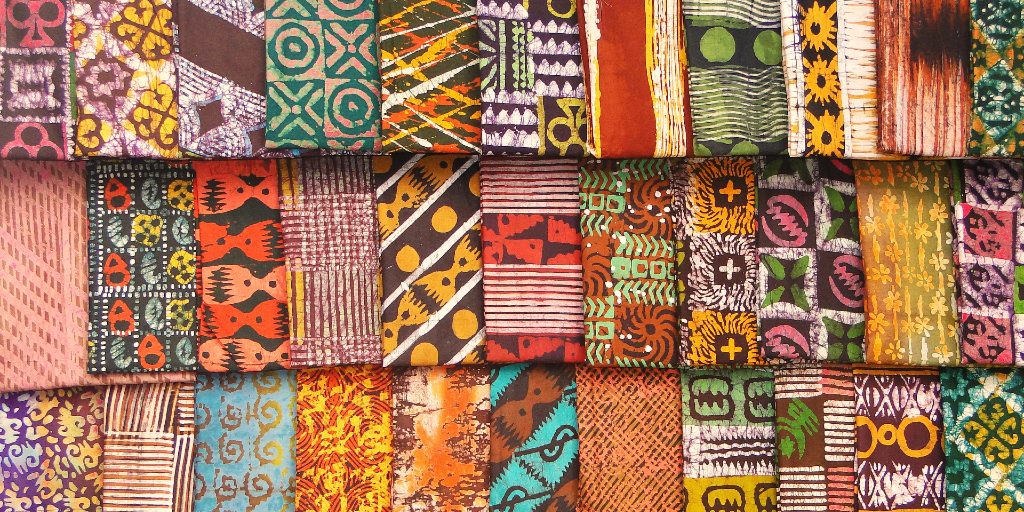
Original photo: “Kente (Batik) Cloth in Market – Kumasi – Ghana” by Adam Jones is licensed by CC BY-SA 2.0
The first names of children of Akan tribes – like the Fante and Ashanti tribes – are based on the day of the week on which they were born. It’s said that your name influences aspects such as your spiritual and professional path, as well as your personality.
If you’re ever in Accra, you’re likely to spot a huge fish or aeroplane sculpture travelling down a side street on the shoulders of several men. You might be surprised to learn that these detailed wooden carvings are not only artworks, they’re also coffins.
The custom of creating elaborate coffins for persons of prominence originates from the Ga people’s belief that life carries on after death. The theme for the coffin is usually based on the person’s vocation, and the goal is to make a good impression once the deceased gets to the other side.
If you’re lucky enough to spot one, take note of the workmanship. A lot of care goes into making these coffins, and they can take more than a month to complete.
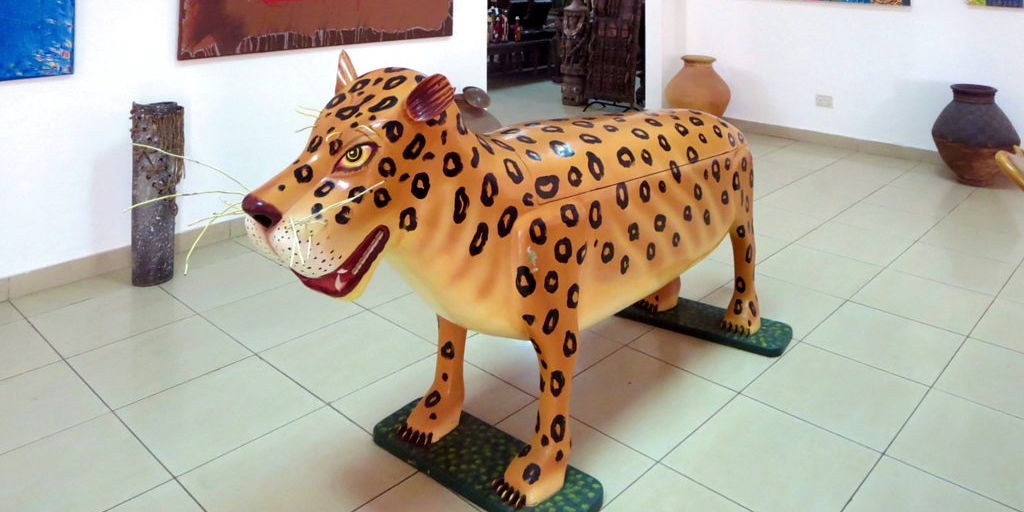
Original photo: “Lion Coffin” by D-Stanley is licensed under CC BY 2.0
Customarily, music had a social function in Ghanaian society. Drumming was used as a form of communication, and stories told using music helped to convey the history of Ghanaian people.
Similarly, a praise singer, or griot, would have the role of documenting and conveying the accomplishments of kings. String and wind instruments were also commonly used by Ghanaian people in the north, while in the south, drumming was the main way to make music.
The Portuguese, Dutch and British introduced European instruments to Ghana during colonisation. Soon after Ghana gained independence, musicians in Ghana began creating traditional rhythms using these instruments, developing a musical style now known as highlife.
Today, highlife has evolved into hiplife: electronic beats featuring Twi-language rap. As Ghana isa predominantly Christian country, upbeat gospel songs are also popular.
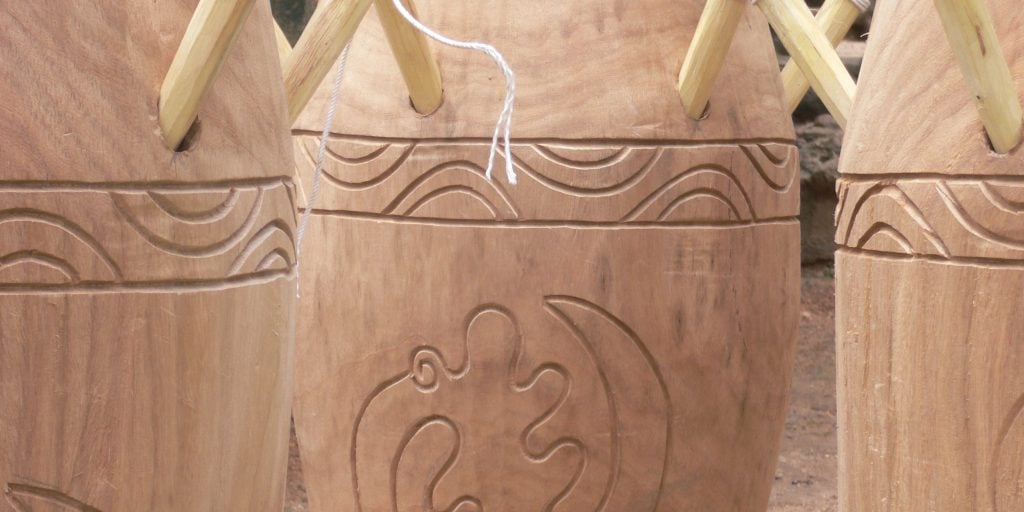
Original photo:“Drum Village” by oneVillage Initiative is licensed under CC BY-SA 2.0
Despite the small amount of funds and infrastructure available to develop the entertainment industry, a straight-to-video film industry sprung up in Ghana during the 1980s.
The city of Accra was, and still is, the capital of this industry and the films usually revolve around challenges faced by residents of urban Ghana. The spirit world also has a prominent presence in these films.
Ghanaian films have become so successful that the largest media capital in Africa, Nigeria’s Nollywood, has even taken an interest in Ghana’s film-makers and actors, setting up several partnerships.
Soccer is a national pastime in Ghana and their national football team – also known as the Black Stars, named after the five-pointed star displayed on their flag – has been competing on an international level since the 1940s.
Having won the Africa Cup of Nations numerous times, Ghana is one of the best in the sport, and regularly go toe-to-toe with accomplished national teams like Mexico and Egypt.
You’ll see the Ghanaian soccer team out on the field, dressed in their white jerseys with black accents and a black star just below the collar. Famous Ghanaian soccer players include Edwin Gyasi and Jordan Ayew.
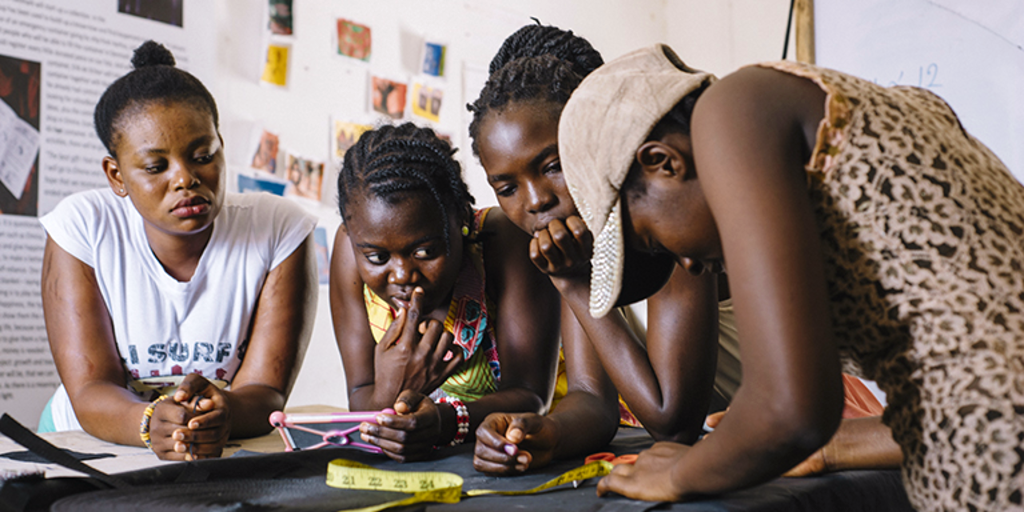
So, now that you feel like less of an “oburoni” (a foreigner) and a bit more of an “obibini” (a local), you might want to take a look at some of the volunteering opportunities available in Ghana through GVI.
We partner with women’s rights groups, primary schools and other organisations focused on sustainable development, and contribute to ongoing work in Ghanaian communities.
Take a look at our volunteer programs in Ghana and see how you can get involved.
We understand that you may have questions about how COVID-19 will affect your travel plans. Visit our FAQs page which explains our latest safety protocols in response to COVID-19.
Disclaimer: The images in this article were taken pre-COVID-19.
Embark on a journey through Barcelona's captivating art and architecture. Explore the visionary works of Gaudí, Picasso, and more, set against the city's stunning landscapes.
GVI
Posted: July 5, 2024